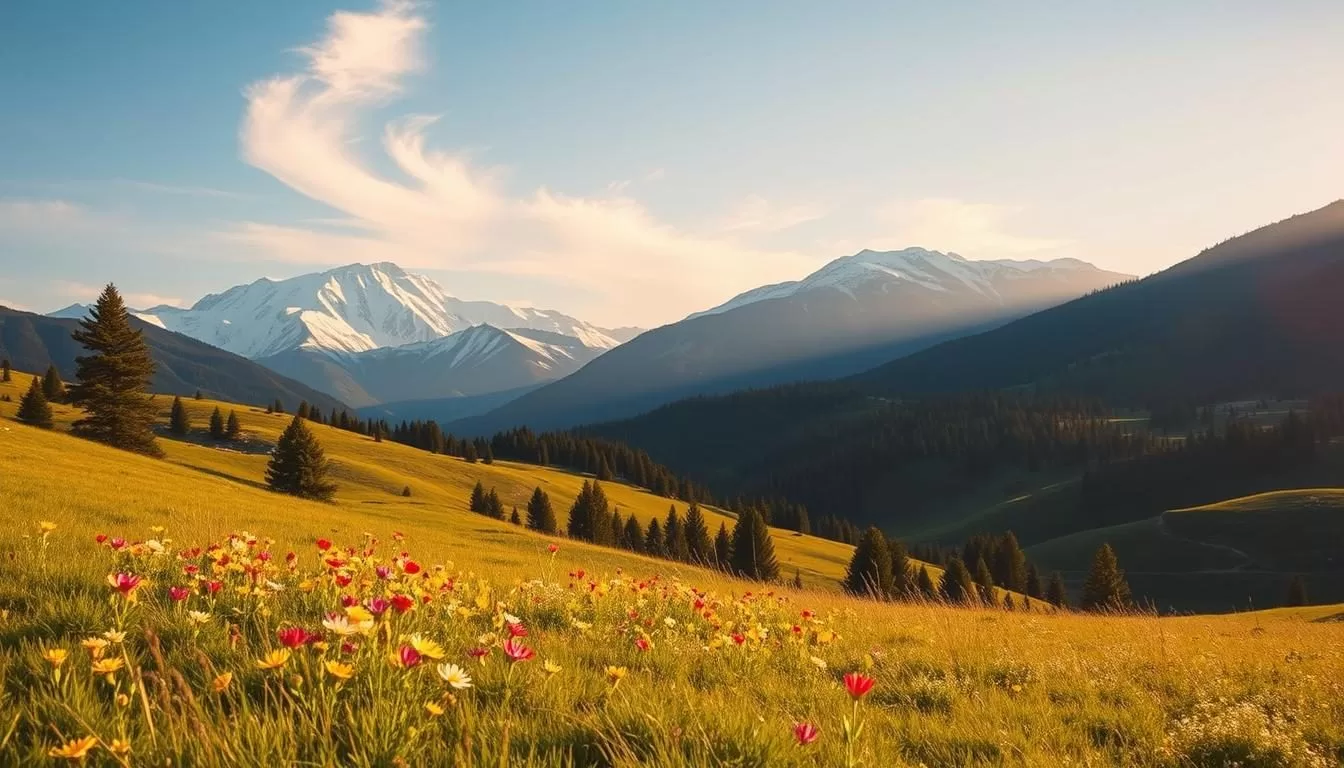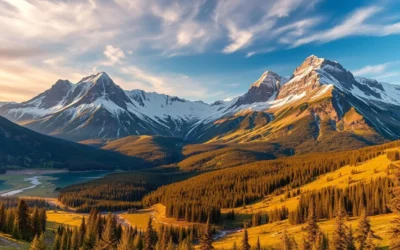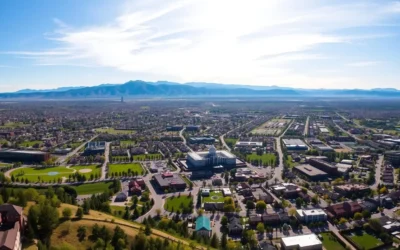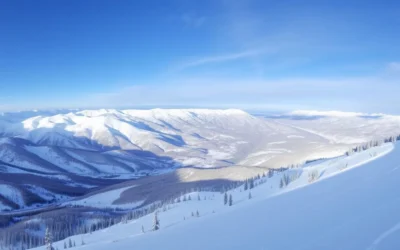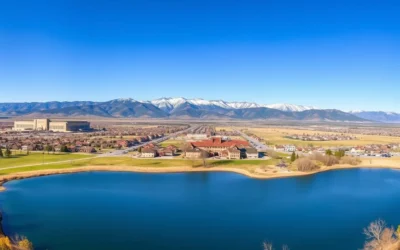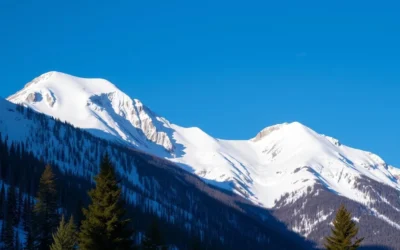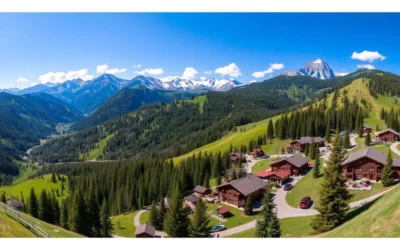✓ Accommodations ✓ Flights ✓ Rental Cars ✓ Tours & Activities
Planning a trip to Colorado can be a thrilling experience, with its diverse landscapes and dramatic seasonal changes offering something for every kind of traveler. Understanding the weather patterns across different regions is crucial for a successful trip that aligns with your preferred activities and comfort level.
The state’s climate varies significantly, experiencing four distinct seasons, each with its unique charm and opportunities for exploration. From the snow-covered winter landscapes to the vibrant summer hiking trails, temperatures can fluctuate greatly between seasons and even between day and night.
This guide will help you determine the ideal time to visit based on your interests, whether you’re looking for perfect skiing conditions, wildflower blooms, or pleasant hiking weather. By exploring regional differences and seasonal highlights, you’ll be well-prepared for your Colorado adventure.
Understanding Colorado’s Unique Climate
The diverse geography of Colorado results in a unique climate with varied weather conditions. As you plan your trip, understanding the factors that influence the state’s weather will help you prepare for the conditions you’ll encounter.
Elevation’s Impact on Weather Patterns
Colorado’s elevation plays a significant role in shaping its climate. With elevations ranging from 3,315 feet to 14,433 feet at the summit of Mount Elbert, the state’s varied heights create distinct microclimates. This means that weather conditions can vary significantly between regions that are relatively close geographically. For instance, mountainous areas tend to be cooler and receive more precipitation than the plains.
Four Distinct Seasons Across the State
Colorado experiences four well-defined seasons, each bringing its own unique weather patterns and opportunities for different activities. From the blooming flowers of spring to the snowy landscapes of winter, each season offers a distinct Colorado experience. Understanding these seasonal changes is crucial for planning your trip.
Temperature Fluctuations and Preparation
One of the hallmarks of Colorado’s climate is its temperature fluctuations, with variations of up to 30 degrees possible within a single day. This makes layered clothing essential for visitors. By being prepared for these changes, you can ensure a comfortable trip regardless of the season.
Regional Weather Variations in Colorado
As you travel across Colorado, you’ll notice distinct regional differences in weather conditions. The state’s diverse geography, which includes mountains, plains, and valleys, contributes to these variations.
Northern Colorado Weather Profile
Northern Colorado, including cities like Boulder and Fort Collins, experiences cooler temperatures year-round. Winters are cold, with temperatures ranging from the low 30s to the low 60s degrees F, while summers are mild, ranging from the high 40s to the low 90s degrees F. This region also sees higher snowfall, averaging 89 inches annually.
Southern Colorado Climate Patterns
Southern Colorado, encompassing Colorado Springs, Pueblo, and Trinidad, enjoys moderate temperatures throughout the year. Winter temperatures range from the high 10s to the upper 50s degrees F, and summer temperatures range from the low 50s to the mid-80s degrees F. However, this region can experience significant wind during the summer and fall months.
Eastern Plains Weather Characteristics
The Eastern Plains of Colorado are known for temperature fluctuations and a higher risk of severe weather conditions, including tornadoes, strong winds, and hail during the summer thunderstorm season. Winters are cold, with temperatures ranging from the low 20s to the mid-50s degrees F, while summers can be warm, with temperatures ranging from the low 40s to the low 90s degrees F.
Western Slope and Mountain Region Weather
Western Colorado, with its stunning Rocky Mountain backdrop, offers a unique climate perfect for ski resorts and outdoor activities. Winter temperatures range from the low 10s to the high 30s degrees F, and summer temperatures range from the low 30s to the upper 70s degrees F. Snow is possible year-round at higher elevations in this region.
| Region | Winter Temperatures (°F) | Summer Temperatures (°F) |
|---|---|---|
| Northern Colorado | Low 30s to low 60s | High 40s to low 90s |
| Southern Colorado | High 10s to upper 50s | Low 50s to mid-80s |
| Eastern Plains | Low 20s to mid-50s | Low 40s to low 90s |
| Western Colorado | Low 10s to high 30s | Low 30s to upper 70s |
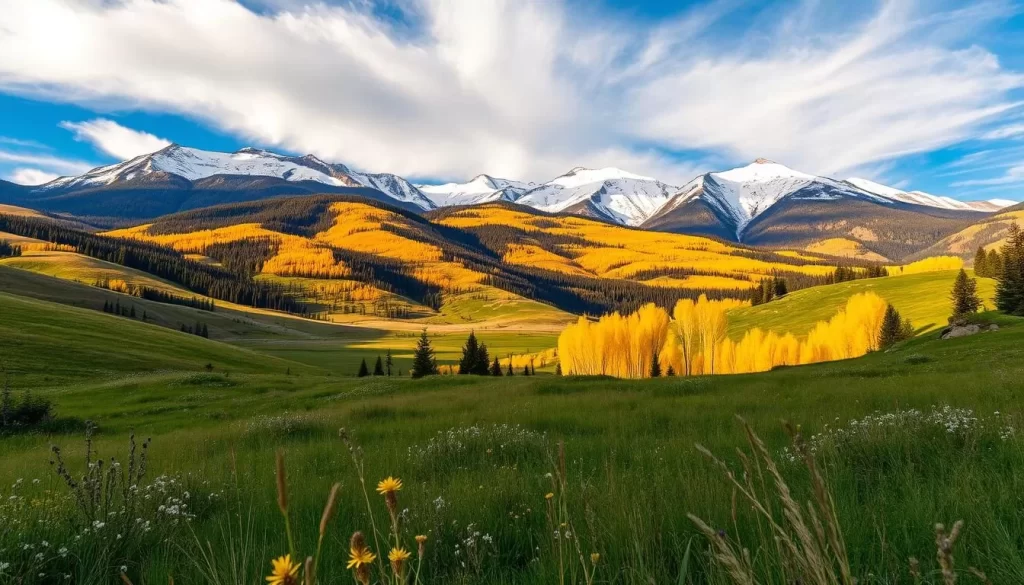
Spring in Colorado: March to May
You can expect a dynamic spring in Colorado, with the weather varying significantly across different regions and elevations. As spring unfolds from March to May, the state transitions from the cold of winter to milder temperatures, though the weather remains highly variable.
Temperature Ranges and Precipitation
During spring, temperatures range from the 40s to 70s Fahrenheit, but it’s not uncommon for the temperature to fluctuate dramatically within a single day, sometimes by as much as 30 degrees in just 12 hours. Precipitation increases during spring, particularly in April and May, making it one of the wetter seasons in Colorado. This moisture is crucial as it helps produce beautiful wildflower blooms later in the season.
Spring Activities and Attractions
Spring is an excellent time to enjoy outdoor activities in Colorado, such as hiking on lower-elevation trails, rock climbing as conditions permit, and mountain biking on dry trails. As the weather warms up, cities like Denver and Boulder come alive with vibrant cultural scenes, and outdoor patios begin to open, offering a delightful way to experience the local culture.
What to Pack for Spring Visits
When visiting Colorado in the spring, it’s essential to pack layers, as the weather can be quite unpredictable. Bring everything from t-shirts and light pants to warm sweaters, a waterproof jacket, and comfortable hiking boots that can handle both mud and occasional snow. Being prepared for the variable spring weather will ensure you make the most of your trip.
Summer in Colorado: June to August
The summer season in Colorado, spanning June to August, offers a unique blend of heat, outdoor activities, and natural beauty. During this period, the state experiences warm to hot temperatures, making it ideal for various adventures.
Heat, Afternoon Thunderstorms, and Dry Conditions
Summer in Colorado is characterized by hot temperatures, often exceeding 100 degrees F in some areas. The afternoon is prone to thunderstorms, which bring heavy rain, thunder, lightning, and occasionally hail. Despite these storms, the summer season is generally dry, with low humidity.
The intense sun due to Colorado’s high elevation and thin atmosphere makes proper sun protection essential.
Summer Outdoor Adventures
Summer is a great time for outdoor activities in Colorado. You can enjoy hiking at higher elevations, whitewater rafting during peak runoff season, mountain biking, rock climbing, and fishing in mountain lakes and streams.
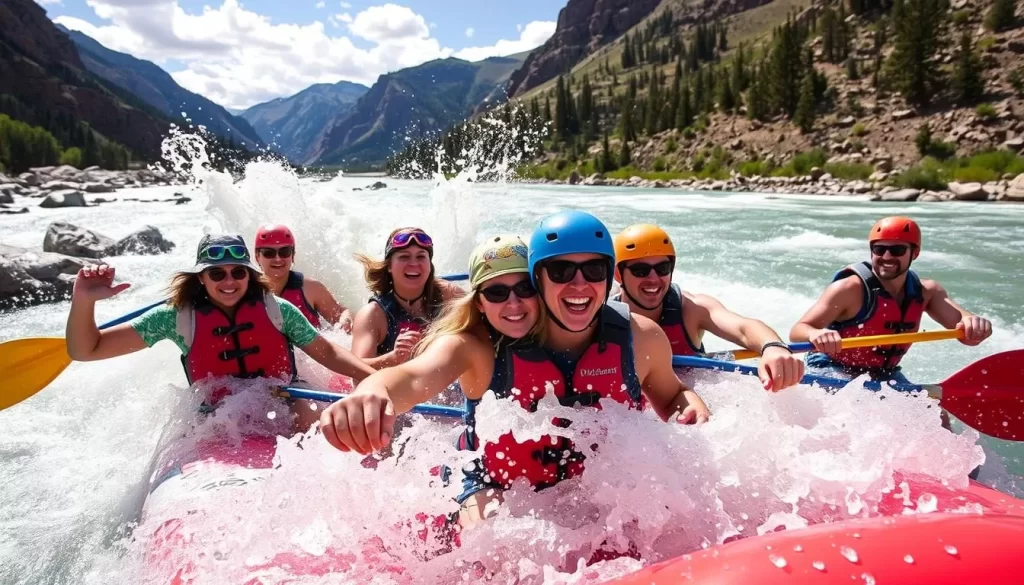
Summer Packing Essentials
When packing for a summer visit to Colorado, don’t forget to include essentials like high-SPF sunscreen, sunglasses, a wide-brimmed hat, lightweight moisture-wicking clothing, a rain jacket for afternoon storms, and sturdy hiking boots.
These items will help you navigate the heat and enjoy the outdoor activities that Colorado has to offer.
Fall in Colorado: September to November
The fall season in Colorado is a time of transition, marked by comfortable temperatures and stunning foliage. As the summer heat dissipates, the state transforms into a picturesque landscape, making it an ideal time to visit.
Temperature Patterns and Fall Colors
During the fall, Colorado experiences mild temperatures, ranging from the high 60s to mid-70s, and can drop as low as the upper 30s. The season is renowned for its vibrant colors as the aspen trees turn brilliant gold against the backdrop of evergreen trees.
Fall Activities and Festivals
Fall in Colorado offers a wide range of outdoor activities, including scenic drives to view the fall foliage, hiking through golden aspen groves, and attending harvest festivals. Visitors can also enjoy visiting pumpkin patches and savoring the last comfortable outdoor dining before winter.
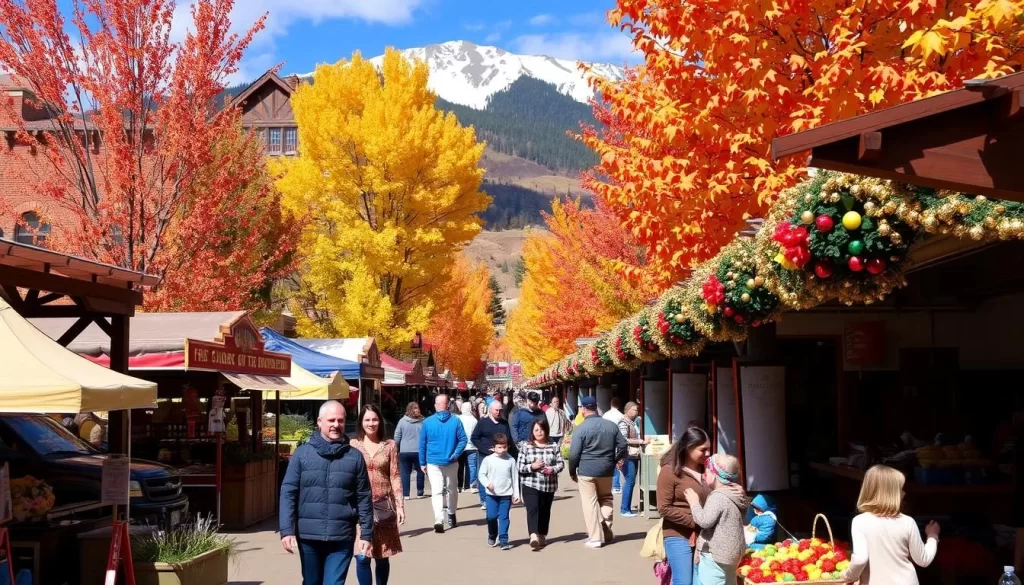
What to Pack for Autumn Visits
When preparing for a fall visit to Colorado, it’s essential to pack layers due to the fluctuating temperatures. Bring short-sleeved shirts for warm days, long-sleeved options for cooler temperatures, and a medium-weight jacket. Additionally, consider packing gloves and a hat for early mornings and evenings, especially later in the season.
Colorado’s weather can be unpredictable, with potential early snowfall at higher elevations, so it’s crucial to be prepared for winter driving conditions if visiting mountain areas in October or November.
Winter in Colorado: December to February
As winter descends on Colorado, the state is blanketed in snow, creating a winter wonderland. This season transforms the landscape, offering a range of outdoor activities and breathtaking scenery.
Snowfall Patterns and Temperature Ranges
Winter in Colorado brings significant snowfall, with the mountains receiving up to 300 inches annually. Temperatures vary greatly by elevation, ranging from the 30s and 40s Fahrenheit during the day to below zero at night, especially in mountain valleys.
Winter Sports and Activities
Colorado’s ski resorts, such as Aspen, Vail, and Breckenridge, offer world-class skiing and snowboarding. Other outdoor activities include snowshoeing, cross-country skiing, ice climbing, and snowmobiling, making Colorado a premier destination for winter sports enthusiasts.
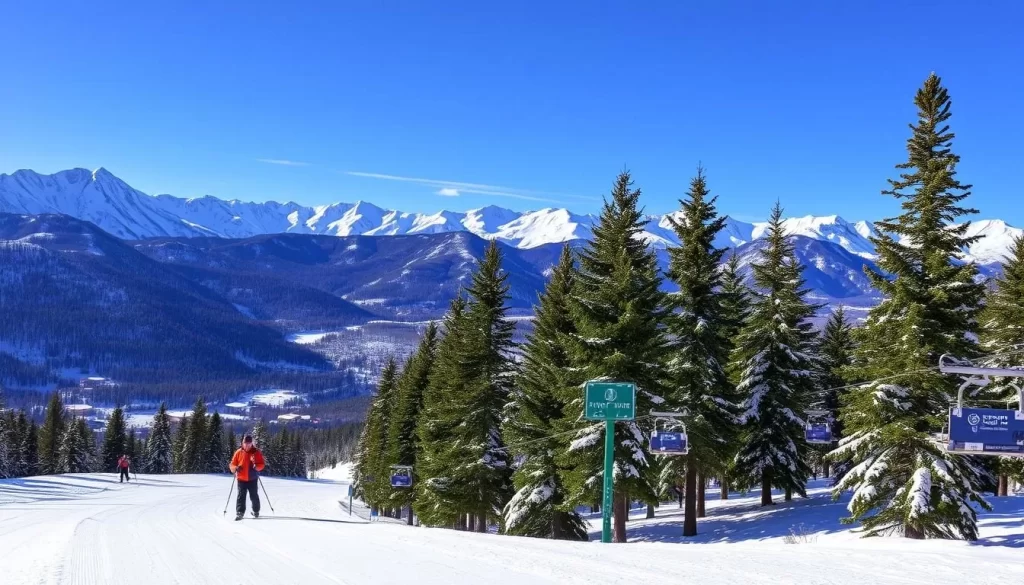
Winter Travel Essentials
When traveling to Colorado in winter, it’s essential to pack a waterproof winter jacket, insulated snow pants, and waterproof boots with good traction. Don’t forget thermal layers, a warm hat, gloves, and accessories like hand warmers and ice scrapers for driving.
Colorado, United States: Best Months for a Weather-Savvy Trip
The ideal time to visit Colorado varies, but certain months stand out for their favorable weather and manageable crowds. When planning your trip, consider the activities and experiences you want to have, as this will help determine the best time for your visit.
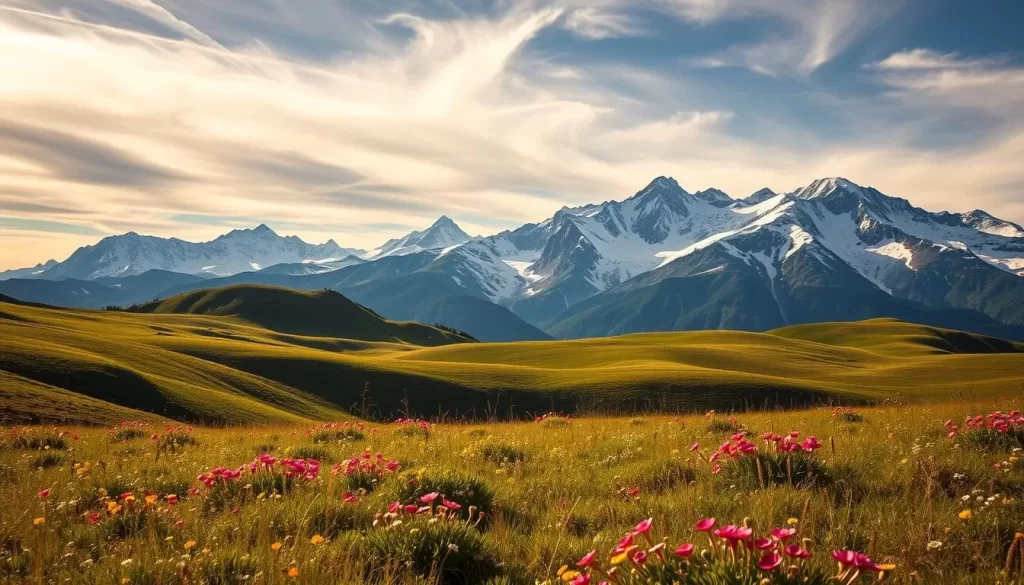
May-June: Perfect Balance of Weather and Crowds
May and June are excellent months to visit Colorado, offering warm temperatures and the beauty of blooming wildflowers. The weather is increasingly pleasant, and you can enjoy the beginning of summer activities without the peak crowds that arrive in July and August.
September-October: Fall Colors and Mild Weather
September and October are considered among the best time to visit Colorado, with stable, mild weather and spectacular fall foliage. After the Labor Day rush, the crowds dissipate, making it an ideal period for those seeking a more relaxed experience at this popular destination.
January-February: Prime Skiing Conditions
For winter sports enthusiasts, January and February provide the most reliable conditions, with consistent snowpack and powder days. Colorado’s world-renowned ski resorts are in full swing during these months, making it a prime time for skiing and snowboarding.
Rocky Mountain National Park: Seasonal Guide
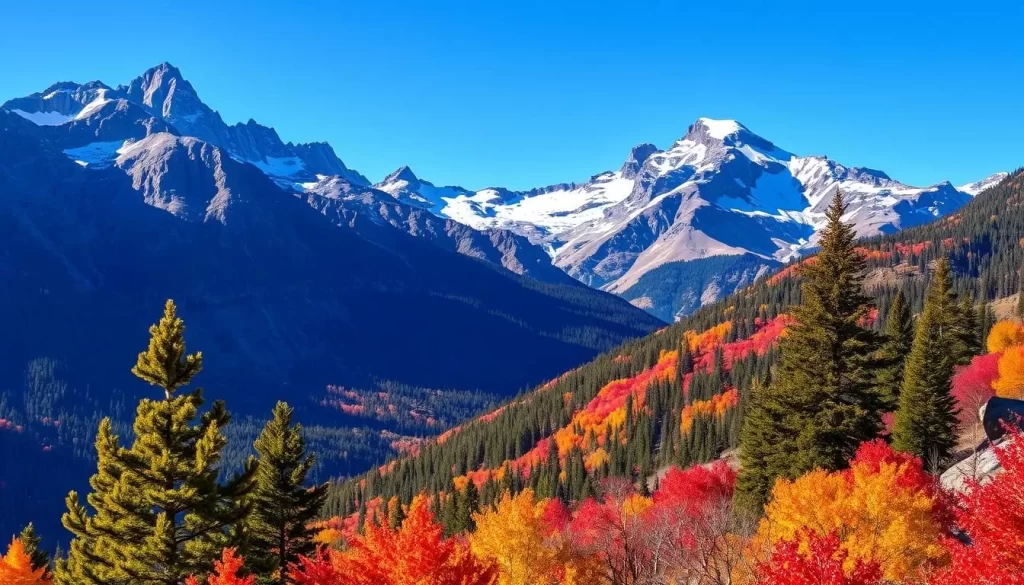
Rocky Mountain National Park, a crown jewel of Colorado, transforms dramatically with the seasons, offering a unique experience for visitors. As the seasons change, so do the opportunities for adventure and exploration within the park.
Trail Accessibility by Season
Trail accessibility in Rocky Mountain National Park varies significantly with the seasons. High-elevation trails, such as those leading to Alpine lakes, are typically snow-covered until late June or early July. In contrast, lower elevation trails may become accessible by late May.
During the summer months (late June through August), the park’s trail system is fully accessible, including the popular Alpine areas above the treeline. However, visitors should be cautious of afternoon thunderstorms that can make hiking hazardous after about 2 PM.
Wildlife Viewing Opportunities by Month
The park offers excellent wildlife viewing opportunities throughout the year. In the fall, typically peaking in mid to late September, the park is renowned for its spectacular golden aspen displays. This season also brings the elk rutting season, with bugling displays that are a highlight for many visitors.
Winter transforms the park into a serene snow-covered landscape, with limited road access due to closures on sections of Trail Ridge Road. Despite these limitations, the season offers wonderful opportunities for snowshoeing, cross-country skiing, and spotting wildlife against the snowy backdrop.
Avoiding Crowds at the Park
To avoid the crowds that flock to Rocky Mountain National Park during the peak summer season, consider visiting on weekdays, arriving before 8 AM or after 3 PM, or exploring less popular areas like the west side near Grand Lake. Visiting during the shoulder seasons, such as late May or early October, can also provide a more serene experience.
By planning your visit according to these tips, you can enjoy the park’s natural beauty without the congestion, making for a more enjoyable and peaceful experience.
Denver and Front Range Cities: Weather Planning
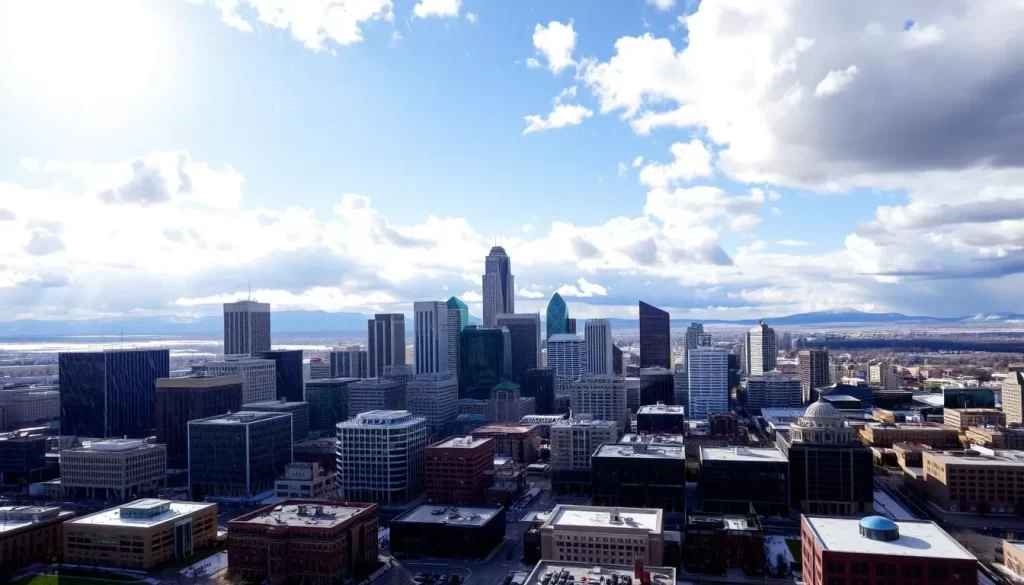
Denver, along with other Front Range cities like Boulder and Colorado Springs, experiences a unique blend of weather conditions that dictate the city’s vibe and activities. The region’s weather is milder compared to the mountains, making these cities accessible year-round.
Urban Activities for Each Season
Each season in Denver and the Front Range cities offers a distinct urban experience. In the winter, the relatively mild weather, with periodic snowfall, allows for comfortable city exploration. You can enjoy museums, breweries, and indoor cultural attractions on snow days.
Spring brings beautiful flowering trees and gardens to the city’s landscape, although the possibility of heavy, wet snowstorms in March and April requires flexible planning.
During the summer, the heat can be intense, with temperatures in the 90s. Thus, morning activities, water features, shaded parks, and air-conditioned venues become more appealing.
Fall is perhaps the most pleasant season, with mild temperatures and golden trees lining the city streets. Outdoor patios remain comfortable well into October, making it an ideal time for urban activities.
Day Trips from Denver Based on Weather
The weather also influences day trips from Denver. During the summer heat, heading to higher elevations can be a refreshing escape. In spring and fall, exploring Red Rocks and foothill areas is a popular activity.
When winter temperatures drop, visiting nearby hot springs can be a great way to relax. The varied weather conditions make Denver and the Front Range a versatile destination for different types of trips.
Mountain Towns and Ski Resorts: Seasonal Considerations
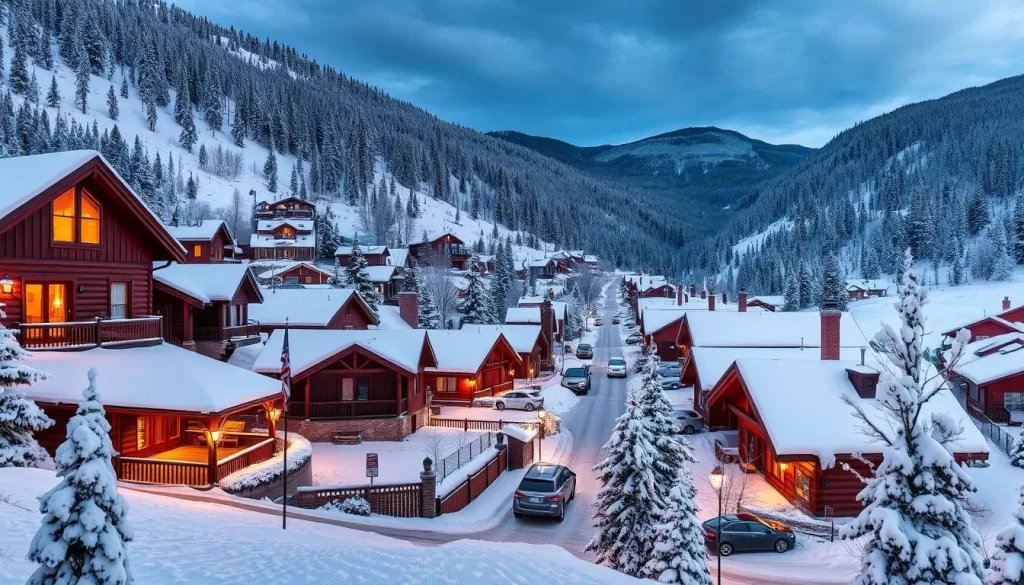
As the seasons change, Colorado’s charming mountain destinations transform, offering a fresh adventure for travelers. Colorado’s mountain towns and world-class ski resorts operate on seasonal rhythms that dramatically affect everything from crowd levels and accommodation prices to available activities and dining options.
Peak Seasons for Popular Destinations
Winter (December through March) represents the primary peak season for mountain destinations like Aspen, Vail, Breckenridge, and Telluride, with premium pricing, advance reservations required, and the full energy of ski season in effect. January and February typically offer the most reliable snow conditions for skiing and snowboarding, while December brings festive holiday decorations and March offers increasingly sunny days with a still-solid snow base.
A secondary peak season occurs during summer (July and August) when mountain towns transform into hiking, mountain biking, and outdoor festival destinations, with wildflowers blooming and outdoor dining in full swing.
Off-Season Benefits and Activities
The shoulder seasons of late April to early June and September to mid-November offer significant benefits for budget-conscious travelers, including dramatically lower accommodation rates, fewer crowds, and a more authentic local experience. Off-season activities in mountain towns might include hiking amid spring wildflowers or fall colors, attending film or music festivals that often occur during shoulder seasons, enjoying hot springs, and experiencing the peaceful transition between seasons.
By understanding the seasonal rhythms of Colorado’s mountain towns, you can plan a trip that suits your preferences, whether you’re looking for the excitement of peak season or the serenity of the off-season.
Weather-Related Travel Tips for Colorado
To ensure a safe and enjoyable trip to Colorado, understanding the state’s weather patterns is crucial. Colorado’s variable weather conditions and high elevation create unique travel considerations that require specific preparation.
Preparing for Rapid Weather Changes
Rapid weather changes are common throughout Colorado, with temperature swings of 30+ degrees possible within hours. Layered clothing and constant weather awareness are essential to navigate these changes.
Altitude Sickness Prevention
Altitude sickness affects many visitors to Colorado, particularly those traveling directly to areas above 8,000 feet. Symptoms can be mitigated by gradual acclimatization, staying hydrated, and avoiding alcohol initially.
Road Condition Resources and Safety
Winter driving in Colorado presents significant challenges, especially in mountain areas. Essential resources for monitoring road conditions include the CDOT website and phone line (511), local weather forecasts, and hotel concierge services. Ensuring safety on the roads requires careful planning and potentially specialized equipment.

Planning Your Colorado Trip Around Special Events
Planning your trip around special events is a great way to immerse yourself in Colorado’s vibrant culture. The state’s event calendar is filled with exciting festivals and events that showcase local music, food, and traditions.
Spring and Summer Festivals
Spring is a great time to experience Colorado’s culture, with festivals beginning as early as March. The Boulder International Film Festival is a highlight, followed by the Boulder Creek Festival in May, which features live music, carnival activities, art shows, and food vendors. Summer brings an abundance of festivals, with the Colorado Shakespeare Festival (June to August) taking center stage, alongside cultural celebrations like the Boulder Jewish Festival in June.
- Enjoy live music and cultural performances
- Experience the state’s vibrant cultural scene
- Participate in carnival activities and art shows
Fall and Winter Celebrations
As the season changes, fall festivals celebrate the harvest and Colorado’s outdoor beauty, with events focused on fall colors, local food and drink, and community traditions. Winter events embrace the snowy season with quirky traditions, bonfires, and parades, such as Ullr Fest in December and the Winter Craft Beer Festival in February.
- Celebrate the harvest season with fall festivals
- Enjoy winter activities like skiing and snowboarding
- Experience the state’s unique winter celebrations
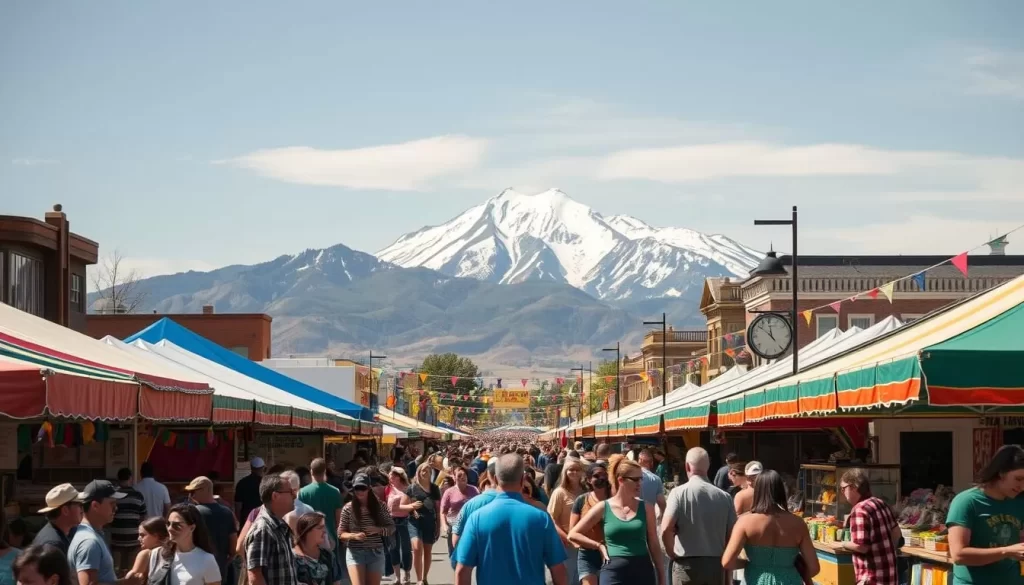
Conclusion
Whether you’re looking for adventure or relaxation, Colorado’s changing seasons provide a unique backdrop for your trip. The state’s diverse landscapes and activities make it an attractive destination for travelers throughout the year.
Colorado truly offers year-round appeal, with each season providing its own unique experiences, landscapes, and opportunities for adventure. For the most balanced experience combining good weather, accessibility to most attractions, and manageable crowd levels, the shoulder seasons of late May to early June and September to early October stand out as particularly ideal times for a Colorado trip.
When planning your visit, consider your personal preferences for activities, tolerance for crowds, budget constraints, and weather comfort. Each season offers distinct advantages and potential challenges. Winter enthusiasts will find December through March offers world-class skiing and snowboarding conditions, while summer visitors can access the highest mountain trails and enjoy the full range of outdoor activities.
Proper preparation for Colorado’s variable weather conditions and elevation challenges will ensure a more comfortable and enjoyable experience. With its dramatic landscapes, outdoor recreation opportunities, vibrant cultural scene, and four distinct seasons, Colorado rewards weather-savvy travelers who time their visits to align with their desired adventure in this spectacular mountain state.
By choosing the right time for your trip, you can maximize your enjoyment and create lasting memories of your Colorado adventure.
The above is subject to change.
Check back often to TRAVEL.COM for the latest travel tips and deals.
